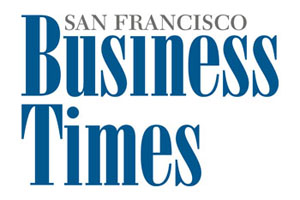5 reasons why the VA will move to Mission Bay — and why it probably won’t
SAN FRAN BUS. TIMES
May 22, 2013
Published in: San Francisco Business Times
Author: Ron Leuty (Reporter)
Mission Bay seems like such a simple move for the VA Medical Center and its productive research operations. But let’s face it: This is a government agency in a city where it’s tough to do much of anything construction-wise.
Nothing is easy.
As the VA in the coming weeks gets a closer look at a Bay Area Council Economics Institute study on where the medical center could move — and how it might get there from its current Lands End home — there are several reasons why it could end up on a chunk of the Salesforce property in Mission Bay. (We first reported in November 2010 about the VA’s interest in Mission Bay.) Yet, there are equally strong reasons why it could never end up across from UCSF.
1. A public-private partnership.
Ask UCSF — it’s a great idea, but it takes a whole lot of dancing with the bureaucrats. UCSF pulled off the complex feat for its $200 million, five-story, 237,000-square-foot Sandler Neurosciences Center, which opened a year ago on the university’s Mission Bay campus.
The University of California system controls the land under the building, but UCSF put together a nonprofit to lease the site and finance construction through state bonds. The group then subleased the site to a partnership between McCarthy Cook & Co. and Edgemoor Real Estate Services, which in turn is leasing the building to UCSF.
UCSF gets control of the building in 30 years.
The VA would add another layer of complexity to that sort of arrangement, as would Salesforce’s ownership of the site most mentioned as the VA’s Mission Bay home. Then again, Salesforce CEO Marc Benioff, his wife Lynne and UCSF have a cozy relationship — UCSF researchers even gave several presentations at last year’s Salesforce Dreamforce conference in San Francisco — and those relationships and UCSF’s experience could help the VA.
The VA could go elsewhere in Mission Bay as well, including UCSF property, according to my colleague J.K. Dineen.
2. Damn gub’mint.
If the wheels of justice move exceedingly slow, those of government agencies move like a tortoise covered in molasses. Going uphill. Getting the VA to move on a new building and a new kind of transaction structure may be difficult. On the other hand, the problem could be presented as a market-driven solution to get around federal budget cuts.
As J.K. notes in his story, the VA has just $1 billion for major and minor capital projects — that’s the entire budget for 153 medical centers across the United States — and the VA hospital and research center in Mission Bay carries a $500 million price tag.
3. The Pelosi problem.
Think the far right kvetched when UCSF won a good chunk of the National Institutes of Health’s economic stimulus grants. Forget that the research was real and credible, the research was needed and will end up helping Americans of all political ilks, but the fact that grants fell into Pelosi’s district sent Limbaugh-like heads spinning.
Fast forward to today, with a Congress that is more divided. Even if the VA finds a creative way around a Congressional outlay for the project — as a lease-back play may provide — politicos are equally adept at subtly undermining what they don’t want. Put the face of Pelosi and Sen. Dianne Feinstein on that as well and you have the makings of politics at its worse.
4. Bio Mission Bay or Tech Mission Bay?
Yes, Mission Bay can — and has — attracted tech companies. In the end, though, it’s not the tech scene: It’s too much like a college campus — and a chunk of it is, indeed, a college campus — or an office park. Retail is limited. There’s no … how do I say it? … vibe.
That’s OK for lab-centric biotech companies, hospital patients and hospital workers. Restaurants will continue to spring up in and around the neighborhood, thanks to the growing number of housing units and the UCSF Medical Center’s under-construction $1.5 billion women’s, children’s and cancer hospitals. But those restaurants — dare I call them cafés? — will be more functional than hip, now and wow.
Where tech and bio are more likely to eventually compete for space is further south along Third Street, around the Dogpatch neighborhood. More on that soon.
5. It makes too much sense.
OK, that’s the cynic in me that’s talking.
Several UCSF researchers have a dual appointment at the San Francisco VA, helping the site land the reputation as one of the most industrious in the nation. Its work on Alzheimer’s disease, post-traumatic stress disorder, HIV and other conditions is nothing short of amazing.
Its $83 million budget last year led all VA centers.
Right now, those researchers travel to the VA site — literally on the edge of the North American continent in a heavily residential area that’s not well served by public transportation — from UCSF’s Parnassus or Mission Bay campuses.
It makes sense for those researchers to be as close to their other UCSF colleagues as possible. It means greater collaboration, more efficiency and, in a perfect world, faster development times for the kinds of treatments that will make a difference in the lives of veterans who have served their country — and the rest of us as well.
So, of course …. No, I’m not going to say it. That would be cynical.
Ron Leuty covers biotech, higher education and China for the San Francisco Business Times.




